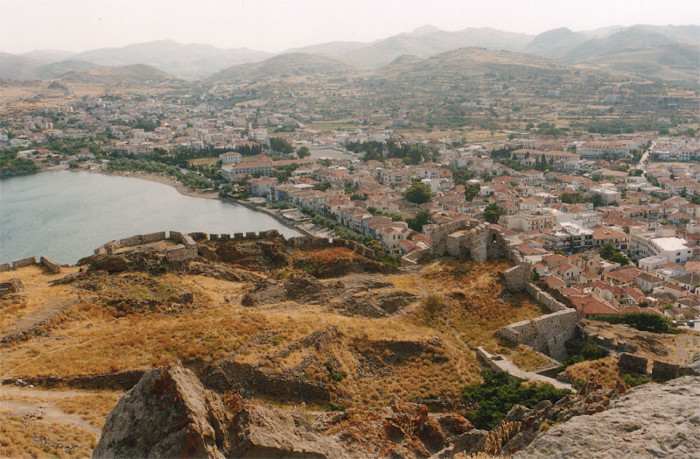In an extremely strategic position for control of the Hellespont straits and navigation, Lemnos is an important center of the North-East Aegean civilization, which flourished during the early Bronze Age (3200 - 2000 BC). Poliochni, a coastal walled settlement of the early Bronze Age (3rd millennium BC), opposite Troy, is considered the first city in Europe. The settlement had islands of houses with a drainage system, paved streets with public wells and buildings of a public character, such as the "parliament" and the "granary". The findings testify to an important metallurgical center that developed pioneering technology in this field and are consistent with the mythological history of Limnos, where the coppersmith god Hephaistos had his workshop and where the Kaveri were worshipped, deities associated with metalwork and navigation. The city was probably destroyed by an earthquake at the end of the 3rd millennium and was abandoned. It was repopulated sporadically during the 2nd millennium BC.
In Koukonisi, a small island in the Gulf of Moudros, a settlement was found, contemporary with the heyday of Poliochni. It was inhabited until the Mycenaean era (1400 - 1100 BC). In Myrina residential remains of the early Bronze Age (3rd millennium BC). Around the end of the 2nd millennium BC Tyrrhenians arrived on the island, only to abandon it around 510 BC, when it was captured by the Athenian general Miltiades. From 493 BC Athenian clergy settle permanently here. Hefaistia (region of Kontopoulio) was founded by Pelasgians and flourished during the 6th and 5th centuries BC. At the top of the town's hill there are remains of an archaic sanctuary of the Great Goddess (mid 7th century BC). Baths, a palace and a theater from Hellenistic times were also excavated. At Cape Chloe, perched on a steep slope towards the sea, a sanctuary of the Kaveri was discovered, demons of the fire and the sea, the beginning of the mysterious worship of which dates back to the end of the 8th century BC. An archaic execution site for the initiation ceremonies was also excavated (around 700 BC, destroyed at the end of the 6th century BC). The sanctuary is spread over two floors and flourished until the end of the Hellenistic period. Near the sanctuary of Kaveri, remains of an early Christian basilica. Near the village of Repanidi, in the place of Anypatis, ruins of an early Christian basilica near a post-Byzantine church. A sanctuary of Artemis was discovered in Avlona Myrina with an arched building and rooms around a courtyard (6th century BC to Hellenistic times). It can be visited in the courtyard of the "Porto Palace" hotel. Remains of the so-called "Pelasgian wall" are preserved on the hill of the Castle. At the exit of the city towards Mudros, a mega-shaped temple of the chthonian Aphrodite was found together with tombs (2nd century BC - 2nd century AD). The port facilities and the city's sewage system date back to the Roman era.
In the Archaeological Museum of Myrina, finds from the excavations in Poliochni, Kaverio and Hefaistia are exhibited.
Archaic settlements were investigated in Koukonisi and Mikro Kasteli. Classical and Hellenistic sites have been identified in many parts of the island (Progomylos, Gomati, Panagia, Komi, Kalliopi, Parahiri, Mikro Kasteli, Portiano, Diapori, Kotsinas, Mosychlos, Repanidi, Moudros, Roussopouli, Velanidia).
Source: MINISTRY OF SHIPPING AND AEGEAN
yen.gr
